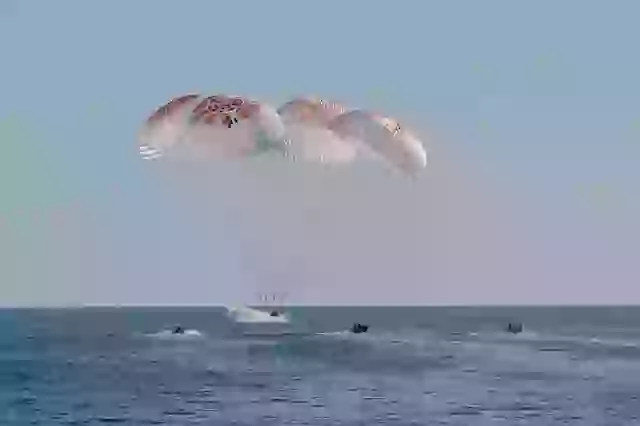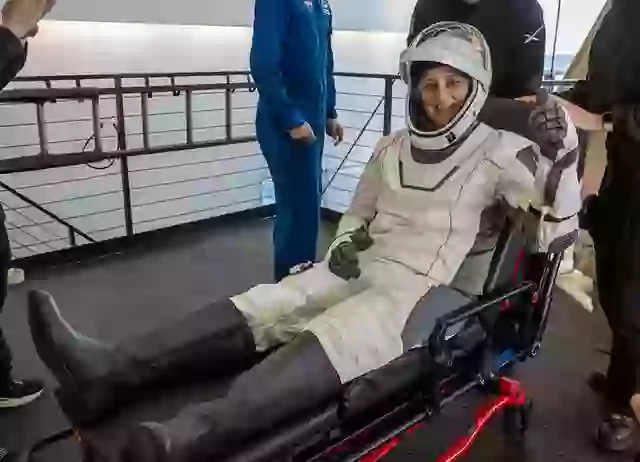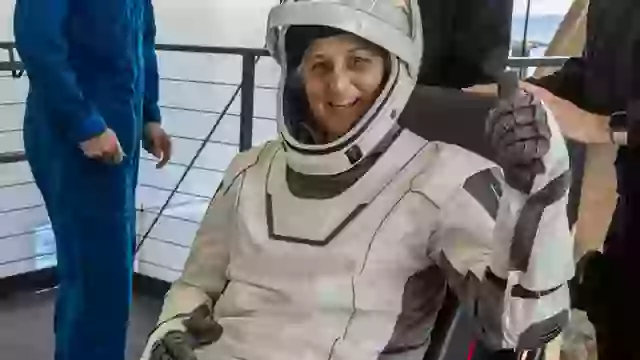After an arduous nine-month ordeal orbiting our planet, astronauts Suni Williams and Butch Wilmore have finally returned home, embarking on the next challenging phase—regaining their strength after the rigors of space.
The two astronauts, Williams and Wilmore, initially took off from Earth in June 2024, planning only a brief stay at the International Space Station (ISS). It was meant to be a routine mission, just another day in space exploration, with scientific experiments and maintenance tasks.

Yet, things quickly spiraled out of control when technical malfunctions struck their Boeing spacecraft. It soon became apparent to NASA engineers back on Earth that the craft was compromised, effectively trapping them in orbit. As months dragged on, the realization that Williams and Wilmore were marooned became an international concern, sparking debates about crew safety and spacecraft reliability.
Throughout the extended stay aboard the ISS, the pair relied heavily on limited resources. They endured psychological stress, isolation, and relentless microgravity—all of which placed substantial physical and emotional demands upon them. But, demonstrating immense resilience, both astronauts remained upbeat, frequently communicating with mission control, reassuring families, colleagues, and the public that they were staying strong.

Eventually, after a painstakingly complex coordination effort, NASA arranged for SpaceX to carry out an unprecedented rescue operation. SpaceX’s spacecraft managed to dock successfully with the ISS, and Williams and Wilmore were safely brought back to Earth on Tuesday, March 18. The landing itself was seamless, a testament to meticulous planning and extraordinary teamwork between public and private space entities.
Now safely back on solid ground, Williams and Wilmore have begun the next grueling stage of their mission—rehabilitation. Returning astronauts face substantial physiological challenges. Months spent floating in microgravity cause muscles to weaken significantly and bone density to drop alarmingly. Without gravity’s constant pull, the body no longer needs to exert strength or maintain structural integrity, causing these debilitating effects to occur rapidly.
Medical professionals have outlined an intensive recovery plan for Williams and Wilmore, spanning approximately 45 days. Renowned pulmonologist and Air Force veteran Dr. Vinay Gupta emphasized the importance of combining structured physical exercises with a precisely managed nutritional regimen. Their routine will consist of dedicated workouts, each lasting around two hours per day under the guidance of specially trained rehabilitation therapists. This regimen will slowly rebuild muscle fibers, restore bone density, and help them regain equilibrium and coordination.
Representatives from NASA have assured that Williams and Wilmore’s recovery should align closely with previous long-duration missions. Historically, astronauts who have spent extended periods aboard the ISS have typically regained their full health within a month and a half, a benchmark that NASA expects these two astronauts to meet as well.
While the astronauts have been reunited with loved ones, their personal homecomings to Massachusetts (Williams) and Tennessee (Wilmore) are delayed until after the intense rehabilitation concludes. Despite finally being back on Earth’s soil, they remain separated from familiar comforts, continuing to live under close medical supervision.
A significant milestone awaits Williams and Wilmore after completing their rehabilitation—a personal invitation from President Donald Trump to visit the White House. President Trump expressed admiration and concern for the astronauts’ physical recovery, emphasizing the difficulty they faced adapting to Earth’s gravity again. Speaking candidly in a recent Fox News interview, Trump remarked, “Their muscles have essentially forgotten gravity, and regaining that strength and endurance is a tremendous challenge. Imagine being weightless, effortlessly lifting enormous weights in space, and then returning here, where even walking requires effort.”
Trump further stressed the emotional component of the astronauts’ recovery journey, noting the necessity of patience as they readjust. “They need time; recovery isn’t simple or instantaneous,” he stated. “But once they’re healthy and ready, welcoming them to the Oval Office will be a privilege and honor.”

The story of Williams and Wilmore not only highlights the physical and psychological extremes of human space exploration but also underscores the value of meticulous planning, teamwork, and international cooperation. Their courage, resilience, and determination have captured global attention, reinforcing the importance of continuous advancements in astronaut safety and spacecraft reliability.
Ultimately, the return of these two astronauts serves as a compelling reminder of humanity’s indomitable spirit, capable of overcoming immense adversity, from the confines of space back to the welcome embrace of gravity.